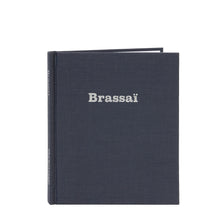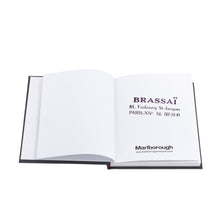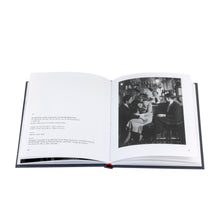Artist: Brassaï
Title: Brassaï
Essay: Anne Wilkes Tucker, The Eye of Paris
Year: 2020
ISBN: 978-0-89797-454-7
Publisher: Marlborough Gallery, Inc.
Book Format: Hardcover, 7 1/4 x 6 1/4, 105 pages, 39 plates
The fully illustrated catalogue accompanying the Marlborough exhibition Brassaï, featuring an essay contribution from Anne Wilkes Tucker, author of Brassaï: The Eye of Paris (Museum of Fine Arts Houston, 1999).
Brassaï (1899-1984) primarily favored living la vie de noctambule (the life of a nightwalker) during the years in which he was capturing scenes around Paris for his photographic series: climbing towers and balconies, surveying quiet parks through locked fences, and walking the Seine, the railroad tracks and the boulevards. In 1976, he explained, “I was eager to penetrate this other world, this fringe world, the secret, sinister world of mobsters, outcasts, toughs, pimps, whores, addicts, inverts. Rightly or wrongly, I felt at the time that this underground world represented Paris at its least cosmopolitan, at its most alive, its most authentic.”
Brassaï never exposed more than two or three negatives of a subject. Such quick decisions demonstrate his prowess for capturing fleeting moments, a skill which certainly served him well in the crowded cafes and dancehalls as well as in dark alleys where lingering was unwise.
The selection of images from Brassaï’s nighttime series form a sort of visual time capsule depicting the many facets of what the colorful Parisian nightlife of the 1930s had to offer. Reminiscing in later years, Brassaï recalled that he and the poet Jacques Prevért “reveled in the beauty of” what they believed to be, at the time, “sinister things.” Appearances by notorious figures of the queer scene of Montparnasse like Fat Claude and Madame Bijou serve as formidable foils to the portraits of lionized male artists— Braque, Maillol, Miró, and Picasso, which are also on view. The exhibition articulates the artist’s egalitarian eye, the same dignity afforded to the master artist shown in his prime is given to the so-called “doyen” of the Parisian vagabonds.
This will be the first time in nearly forty years that Marlborough will showcase Brassaï’s photography. Anne Wilkes Tucker, author of Brassaï: The Eye of Paris (Museum of Fine Arts Houston, 1999), has contributed a new essay for a fully illustrated publication that will accompany the exhibition.







